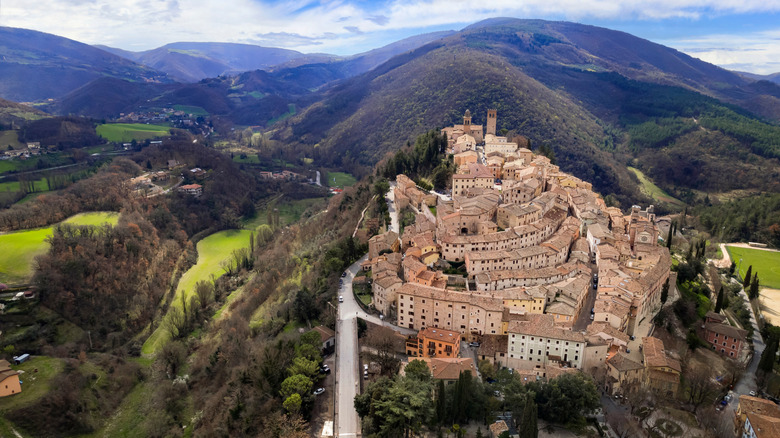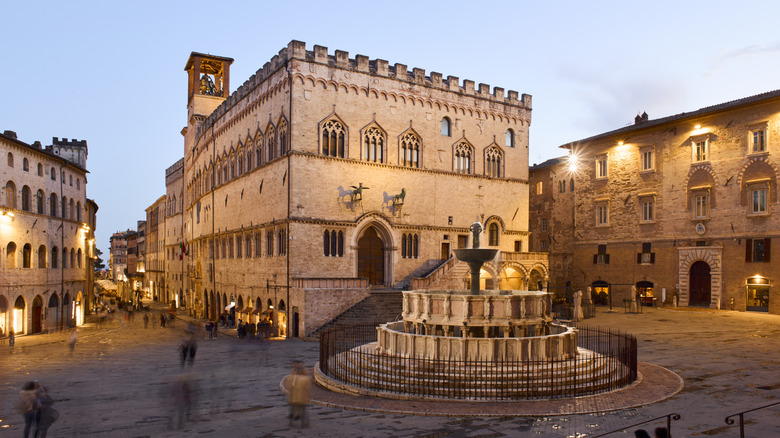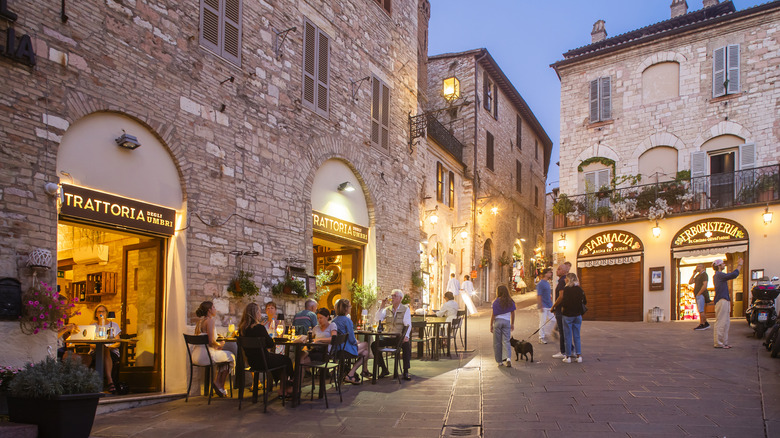Europe's Most Underrated Summer Holiday Destination Is A Rustic Gem Tucked Quietly In Central Italy
From Italy's northernmost alpine towns full of enchanting streets to beguiling sun-drenched southern Sicilian cities — and let's not forget the pristine beaches and cliffside destinations stretching along its coastline — the country is an alluring vacation destination in Europe. At the country's very center lies the surprisingly underrated region of Umbria, affectionately referred to as the "green heart" of Italy. Bookended by more popular, albeit overrated, Italian tourist traps like Rome and Florence, Umbria unveils a tapestry of rustic village centers, sumptuous local cuisines and wines, verdant landscapes, and a smattering of cultural discoveries to delight travelers who dare to venture beyond the well-trodden path. These aspects make it Europe's most underrated summer holiday destination.
The Umbrian region is meant to be roamed: Rent a car and spend several days soaking in the perfectly preserved medieval architecture of the picturesque towns that shine like hidden gems, and indulge in regional fare that includes white truffles and crisp, white wines. The more adventurous will appreciate hikes across Mount Sibillini National Park's forests and mountains or any of the six trails that end up at stunning Marmore waterfalls. Drawing fewer crowds than its famous neighbors, Umbria gives you more bang for your buck, with food and lodging that are generally more affordable than Italy's major cities. But don't be fooled — if you're pining for a touch of luxury, Umbria has its share of Michelin-starred restaurants and upscale retreats.
Discover Umbria's hidden gem towns
The capital of Umbria, Perugia, is an enchanting hilltop town with a compact pedestrian-only historical center, making it a great base for exploring the region. The town's architecture bears the marks of its Etruscan roots, and its medieval walls, alleys, and arches have remained wonderfully intact. An important collection of Renaissance art is housed at the National Gallery of Umbria, on the upper levels of the Palazzo dei Priori. Navigate the streets around the Fontana Maggiore in Piazza IV Novembre, where you're bound to find a restaurant or café to indulge in coffee breaks or full meals. Venture underground to visit the remnants of Rocca Paolina, a 16th-century fortress built as an assertion of power by Pope Paul III.
A 30-minute drive from Perugia takes you to Assisi, the hometown of its famous resident and one of Italy's most important religious figures, Saint Francis. For this reason alone, Assisi draws both tourists and pilgrims to the UNESCO World Heritage site St. Francis Basilica. Built in the 13th century on the heels of St. Francis' canonization, you can visit his remains, which are entombed in the church's lower basilica. The town's labyrinthine streets are punctuated by a handful of religious and cultural sites, souvenir shops, boutiques, restaurants, and piazzas.
A little under an hour northeast of Perugia is Gubbio, whose well-preserved medieval architecture has earned it the nickname "city of stone." Visit its Roman amphitheater and the imposing Cathedral of St. Mariano and Giacomo. Venture two hours southwest of Perugia to Orvieto, another picturesque Umbrian village that spoils travelers with breathtaking views of the surrounding landscape from its hilltop perch. Here, a cable car (funicular) takes you to the top of the hill, where an ancient temple, fortress, and well are within walking distance of each other. Underground, a maze of subterranean corridors, tunnels, and stairways walk you through Orvieto's 2,500-year-old history.
Umbria is a haven for food and festival lovers
Umbria is a foodie's destination. The region is known for its white and black tartufi (truffles), which are seasonally foraged. Porchetta, a mainstay in Umbrian cuisine, is found in sandwiches or accompanied by wine as antipasto. Umbria's rich and hilly terrain produces fantastic wine and olive oil. Orvieto and Todi's grape variety, grechetto, produce floral and citrusy flavors, while vineyards around Trasimeno yield white and red variants, as well as sparkling wines. The olive oil-producing hills of Umbria, notably Amelia, Assisi, Martani, Orvieto, and Trasimeno, have obtained a Protected Designation of Origin (PDO) recognition, so you can't go wrong with grabbing a souvenir bottle from these areas. To satisfy your sweet tooth, make your way to the Perugina Chocolate Factory in Perugia for a sampling of its famous Baci chocolates.
Umbria is lovely in spring, when pleasant weather makes it ideal for outdoor promenades, or during the fall, when wine season kicks in and truffles start to pop up in the area. Time your visits according to the numerous festivals around the region, like Perugia's Umbria Jazz Festival in July and the Eurochocolate festival in March and April. Gubbio's Ceri Festival happens in May, where participants carry heavy 16-foot-high wooden candles through the town's streets, while Assisi's Feast of St. Francis takes place in October.
The Umbrian region is served by Perugia's San Francesco d'Assisi International Airport, and from here, a combined train and bus network connects airline passengers to the different regional towns. Trenitalia links major cities like Rome or Florence to Umbrian towns in three hours or less, but once in Umbria, driving is the most convenient way to get around.


